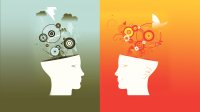7 Ways to Calm a Young Brain in Trauma
How can we help elementary students who have been scarred by tragedy become more receptive to learning?
Your content has been saved!
Go to My Saved Content.Max is one of my sixth-grade students. He meanders into the classroom each day carrying in a past filled with tragedy. His mother was murdered last spring and his father almost exactly a year before her. Now living with his alcoholic grandmother, Max continues to struggle with the aftermath of these tragedies.
His gait is awkward and clumsy, and he avoids eye contact with everyone. His movements are erratic as he plays with the laces on new basketball shoes, slipping them off and on every few minutes. It always feels as if his mind is far away, rarely in Room 242. Making noises, flicking wads of paper, and yelling at classmates across the room are part of his morning routine. Scanning the classroom to see who might be provoking him, he postures for a fight.
The Impact of Trauma
A traumatized brain can be tired, hungry, worried, rejected, or detached, and these states are often accompanied by feelings of isolation, worry, angst, and fear. The neurobiological changes caused by negative experiences trigger a fear response in the brain. When we feel distress, our brains and bodies are flooded with emotional messages that trigger the question, “Am I safe?” We react physiologically with an agitated limbic system that increases blood pressure, heart rate, and respiration as the levels of the hormones cortisol and adrenaline increase in our bodies. Chronic activation of the fear response can damage those parts of the brain responsible for cognition and learning.
When the brain has experienced significant adversity, it becomes fundamentally reorganized. Past experiences can live on in the body and may be experienced as flashbacks, memories, or repetitive thoughts about the painful event.
Many children and adolescents come to school with a deep mistrust of adults because they’ve never formed healthy attachments. These young people have brains that are in a constant state of alarm.
Psychiatrists Bruce Perry and Bessel van der Kolk are pioneers in the study of trauma. Their research looks at the critical issue of how traumatized people can find a sense of safety within their own bodies. Younger children need our help to do that—to process that lump in their throat, that rapid heartbeat, or that sensation around their eyes when they’re about to cry. The best approach, according to Perry and van der Kolk, is to acknowledge the negative reactions by giving these students a safe place for a few minutes, allowing the brain and body to calm down.
Below are some strategies I implement in K-6 classrooms that prepare the brain for sustained attention and reduce distractions. These strategies are beneficial for all students, but especially those who come into the classroom carrying negative emotion. We implement these throughout the day—at the beginning of class, after recess or lunch, or at the end of the day.
Strategies to Calm the Brain
- Taking deep breaths brings an oxygenated glucose blood flow to our frontal lobes. Taking just three deep inhales and exhales calms the emotional brain.
- Movement is critical to learning, as it activates several areas of the brain at once while calming the brain. I will usually lead with a rhythm, using a plastic cup or my body, and students will mimic me by drumming the pattern on their legs and arms. The collective sound brings a sense of community to the classroom.
- Once a day, I pass out a drop of lotion, and for 90 seconds students give their hands and fingers a massage, noticing their palms, fingertips, and any sensations that feel uncomfortable or stiff. We always reflect afterward.
- For a few minutes, I have the students rock along their spine to help them feel present in their bodies. This also provides a soothing rhythm that subtly grounds them with sensation and movement.
- Placing our fingers on our throats, we begin the day with a sound or class chant and feel the vibration of our vocal cords. This gives everyone a chance to participate and to see how we can mimic different animals, instruments, and random classroom sounds such as papers crinkling.
- The students sit with their legs straight out and begin wiggling their toes and ankles, shaking knees and thighs, rotating shoulders, arms, and finally their heads, keeping all body parts moving at the same time. Then we reverse the process and stop our heads, arms, shoulders, and on down. This gives children a great body scan and a sequence for working memory.
- Sometimes I’ll put on music and give the students old scarves, and we’ll dance around the room waving the scarves and feeling the soft sensation as we dance and pass by one another. When the music stops, we freeze and notice our postures and movements. This strategy can be led by the teacher or a student to see if we can mimic a movement or create our own.
These are a few techniques that have worked in my classroom. How have you been able to help calm students who have experienced trauma to get them ready to learn?
